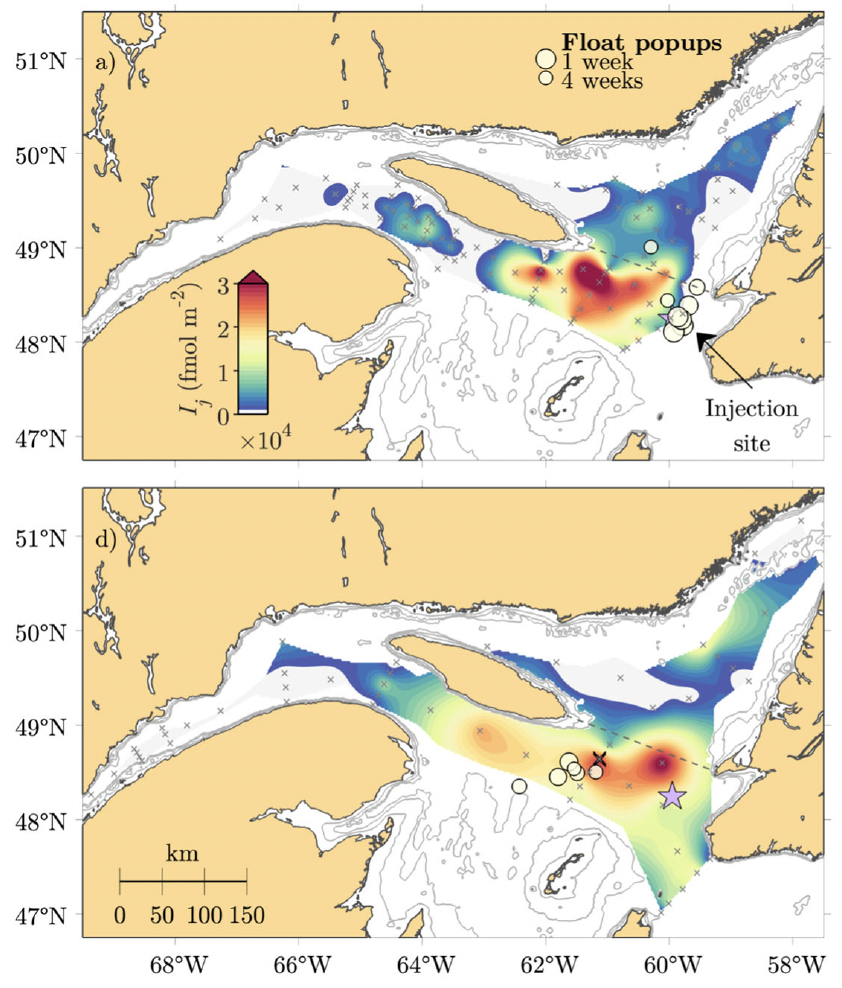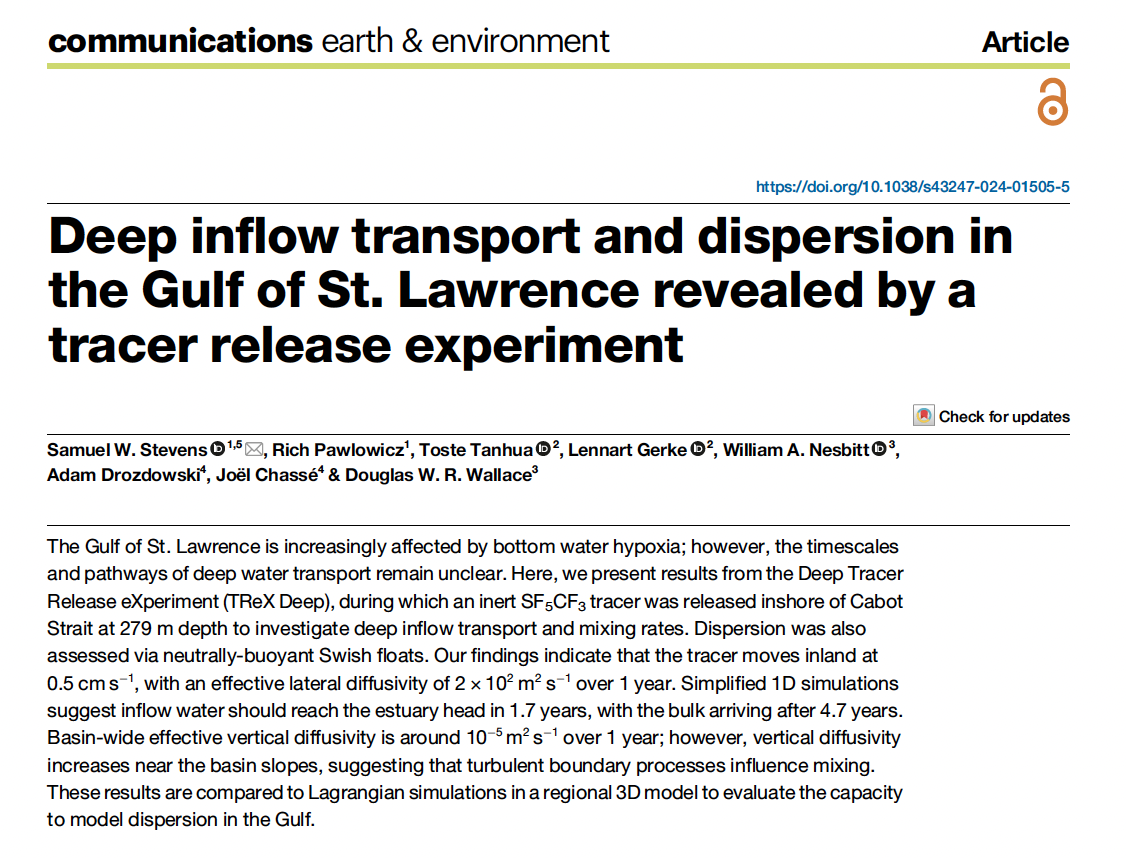The TReX Deep project is a collaborative multidisciplinary project centred around the release and subsequent tracking of an inert SF5CF3 chemical tracer in the Gulf of St. Lawrence. As a region that is proving particularly vulnerable to climate change, the goals of this study are to better understand the transport pathways and transit time distributions of inflow waters from Cabot Strait into the St. Lawrence estuary and wider Gulf. My role in this project is to quantify the horizontal and vertical dispersion of inflow waters using the measurements of tracer spreading since the injection.

In a 2024 paper, we showed that the tracer moved inland at an average speed of 0.5 cm/s while undergoing lateral and vertical mixing. By observing the tracer spreading over a year, we estimated that inflow water would reach the estuary head in about 1.7 years, with most of it arriving in 4.7 years. Vertical mixing was found to be influenced by turbulent boundary processes near basin slopes. These findings are important for understanding deep water transport timescales and predicting the environmental impacts of recent changes to the deep water composition of the Gulf.

One interesting possible application of studying deepwater dispersion in the region is a novel approach using the oxygen produced by green hydrogen plants to combat the expanding hypoxic zones in the Gulf of St. Lawrence. Further details on this approach can be found on CBC News.
